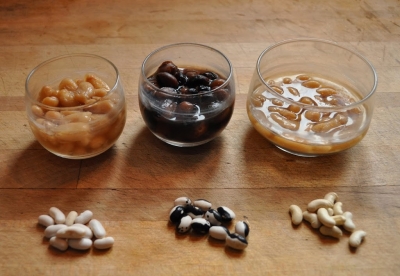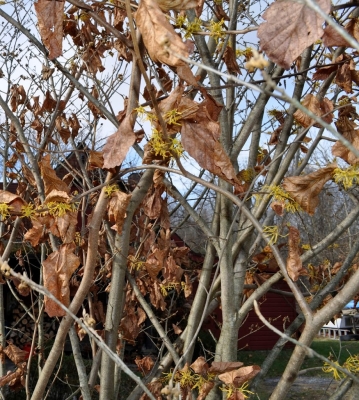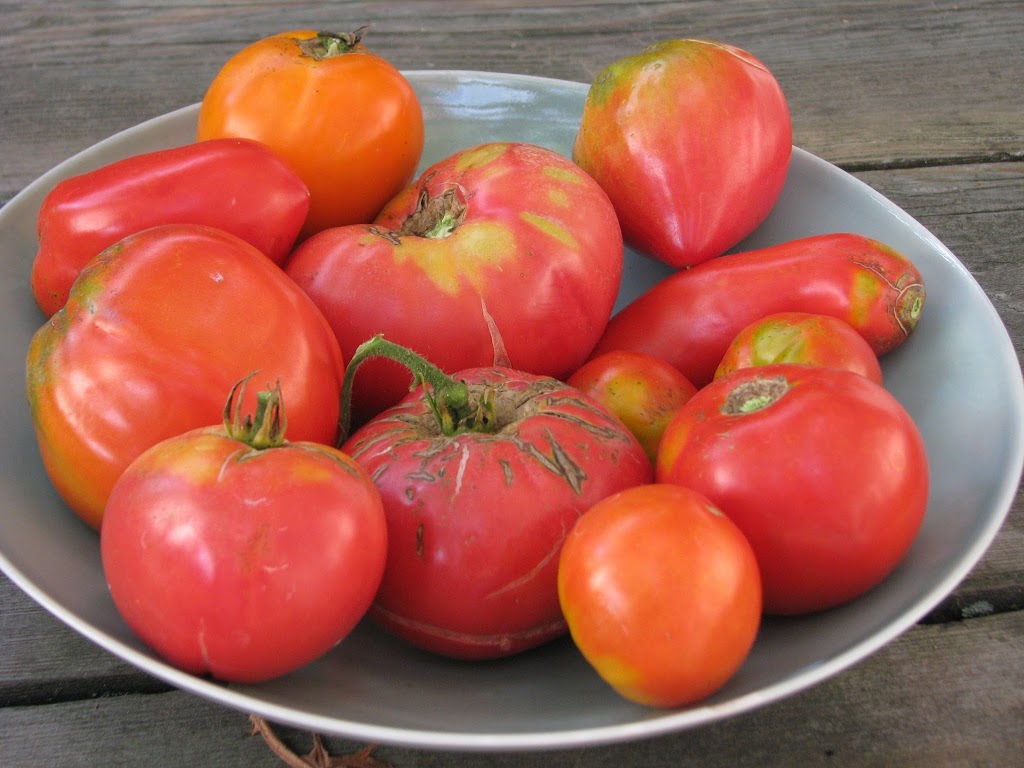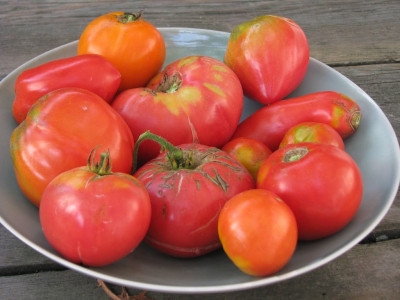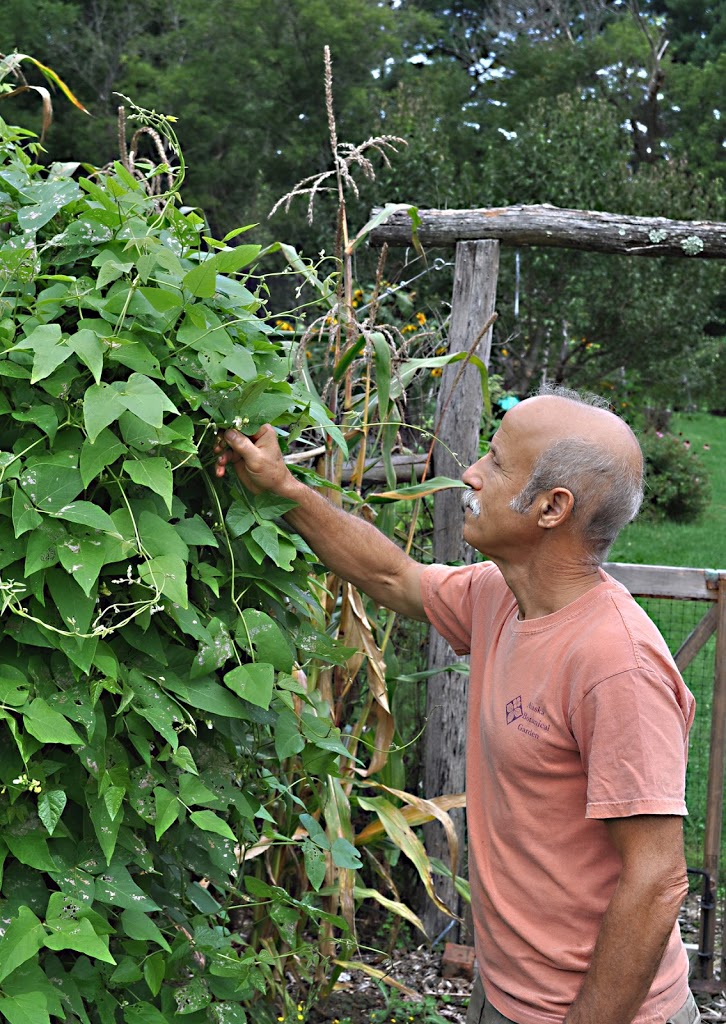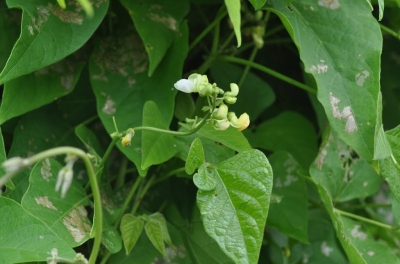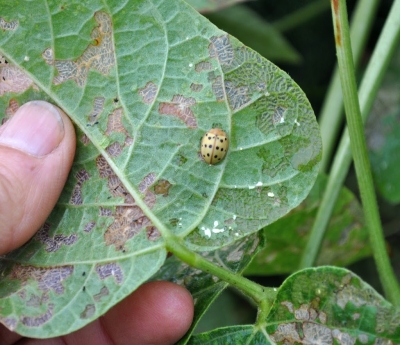Beans, Beans, . . . and Blueberries
Deb and David gather around the kitchen table as the contenders are brought forth, each steeped in its own cooking juice in a custard cup. The event is the long-awaited bean test, home-grown Cannellini beans vs. store-bought Cannellini beans vs. home-grown Calypso (Yin Yang) beans. Mostly, we are interested in
whether the home-grown Cannellini’s would be better than the store bought, a possible reason being that stored, dry beans get tougher with age.
I planted a very short row of the Cannellini and of Calypso beans back in the middle of May. I do mean short, only about 5 feet each. After all, this planting was for testing, not for production.
The beans I planted, as well as kidney beans, pinto beans, and some other dry beans, and green beans, share the same botanical lineage, Phaseolus vulgaris. All can be grown just like green beans except that for dry beans, the harvest is of mature seeds, so a longer season is required, typically around 90 days or so.
After my dry bean harvest, I transferred an aliquot of each variety into its own glass custard cup, did the same with an aliquot of store-bought Cannellini beans, and filled the custard cups with water. The cups went into a larger pot with an inch of water and the whole setup went onto the woodstove to simmer for a couple of days. Retrieval and cooling bring us to this moment.
No need for a blindfold test because the differences were dramatic. The results? All three of us gave the home-grown Cannellini’s the highest marks in terms of creamy texture and good flavor. Second best was Calypso. It appears that I’ll be devoting more space next year to growing Cannellini beans.
—————————————
In addition to mouth-watering flavor and creamy texture, Cannellini beans (and other white beans) are rich in phosphatidylserine. The thinnest thread of evidence suggests that phosphatidylserine might — just might — improve memory and cognition, as well as confer other health benefits. Cow brains are among the richest sources of phosphatidylserine, but I’d rather be forgetful than get mad cow disease.
—————————————–
Lowbush blueberries abound in the woods around here but are conspicuously absent from gardens and landscapes — except in my front yard. I grow them for “luscious landscaping,” that is, for both beauty and
good eating. Plants recently shed their crimson leaves, which is how they show off in autumn. In spring, they show off their nodding, bell-shaped, white flowers, and all summer long, the ground is blanketed with healthy, bluish-green leaves on stems a foot and a half high.
Next summer, I know my plants won’t fruit because yesterday I cut all the stems right down to the ground. Best yields come from stems that are one-year-old and two-years-old, so stems have to grow at least a year before they can flower and fruit.
Traditionally, and under natural conditions, periodic pruning of lowbush blueberries was done with fire. Fire had the additional advantage of knocking out some potential weed and pest problems. Of course, burning also has its hazards and I’m not seeking any excitement in the blueberry bed along the east side of my house beyond a big crop of berries. So I went at the plants this week with hedge shears and hand shears, cutting the stems as low as possible. The lower to the ground plants are lopped back, the fewer the resulting stems next summer, and the more energy the plants can channel into fruit buds for the following year’s harvest.
I don’t really want to sacrifice all of next year’s lowbush blueberry crop so I lopped to the ground only half the planting. Next year, that half that was spared my shears will bear and next autumn I’ll cut those stems down. The summer after next, this year’s lopped down plants will bear fruit, and next year’s lopped down plants won’t. And so the harvest can continue hopscotching merrily along, keeping the plants productive and me in berries every year.
——————————————-
Sharing the lowbush blueberry bed is an Arnold’s Promise witchhazel shrub getting its digs in to offer what is perhaps the final oddity for a generally odd growing season. Year after year it has reliably flowered in March. This year it’s flowering right now, probably because of cool weather followed by extended warm weather duping the shrub into acting as if it was, in fact, March.
One problem with November flowering is that fewer or no flowers will open this coming March. Another problem is that I’d rather see the flowers in March, coming in other heels of winter’s relatively achromatic landscape.


